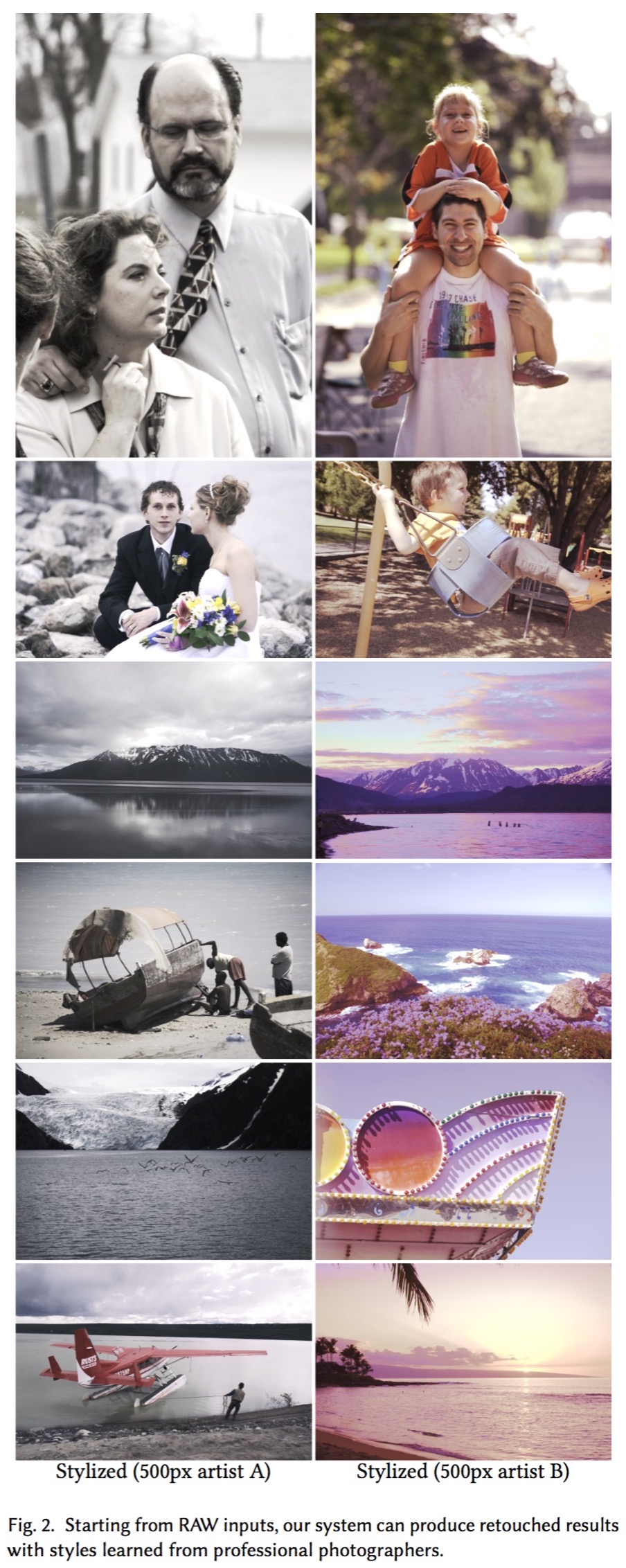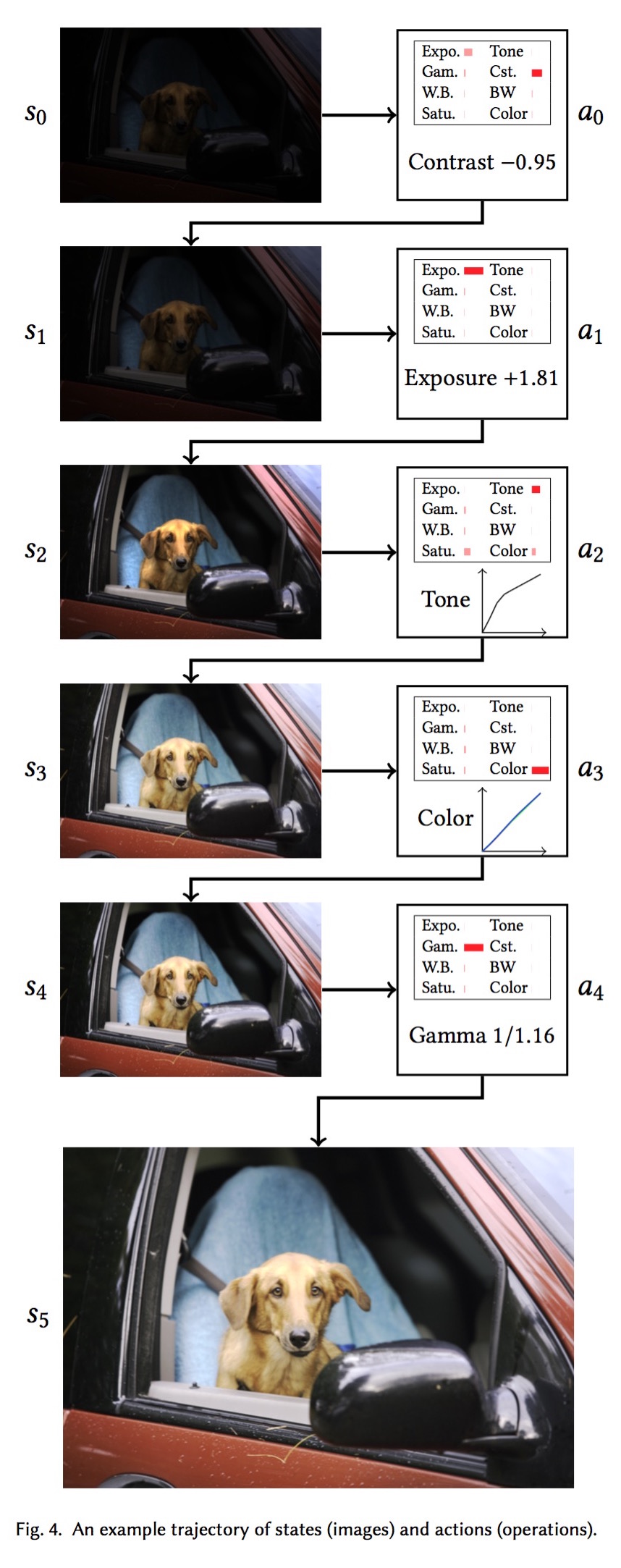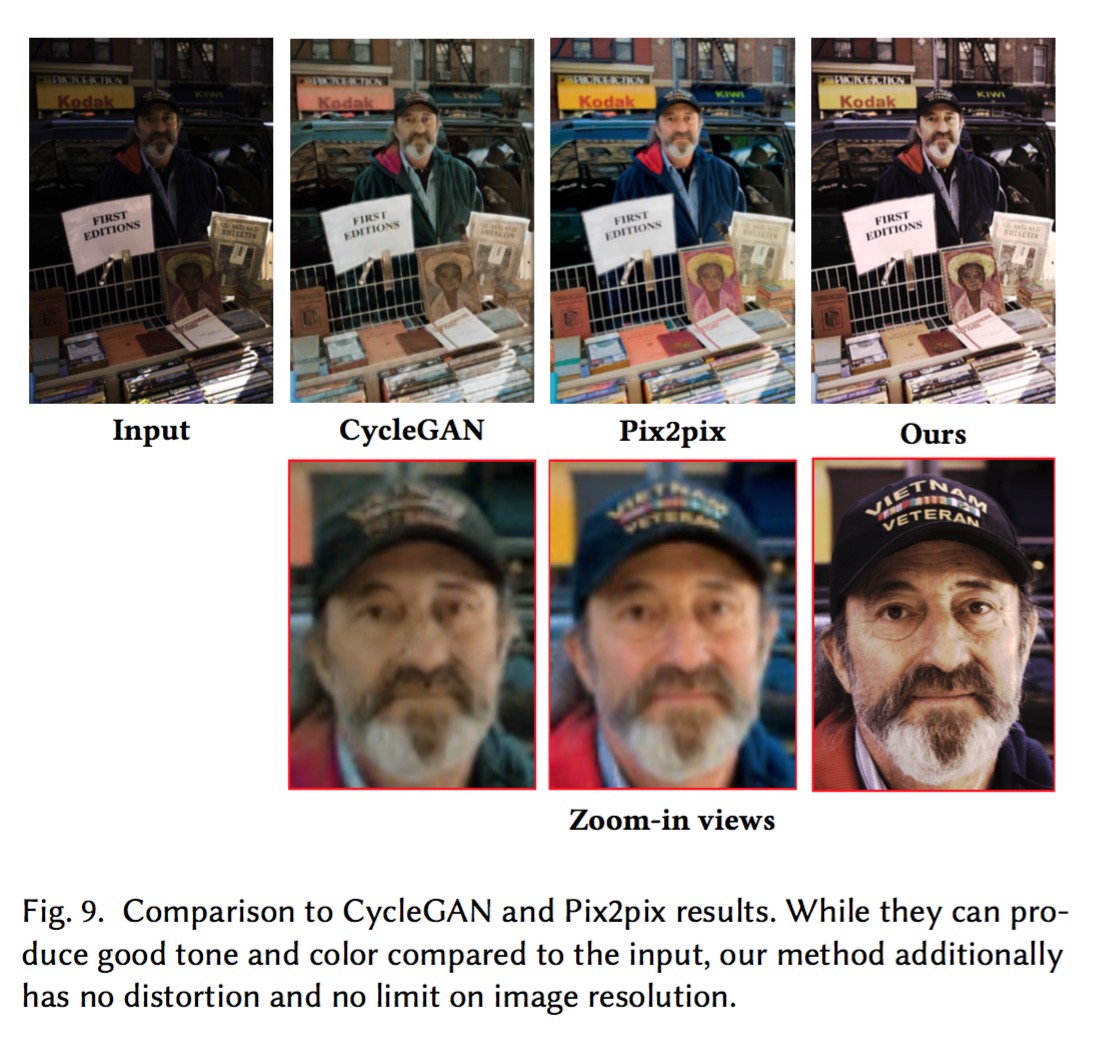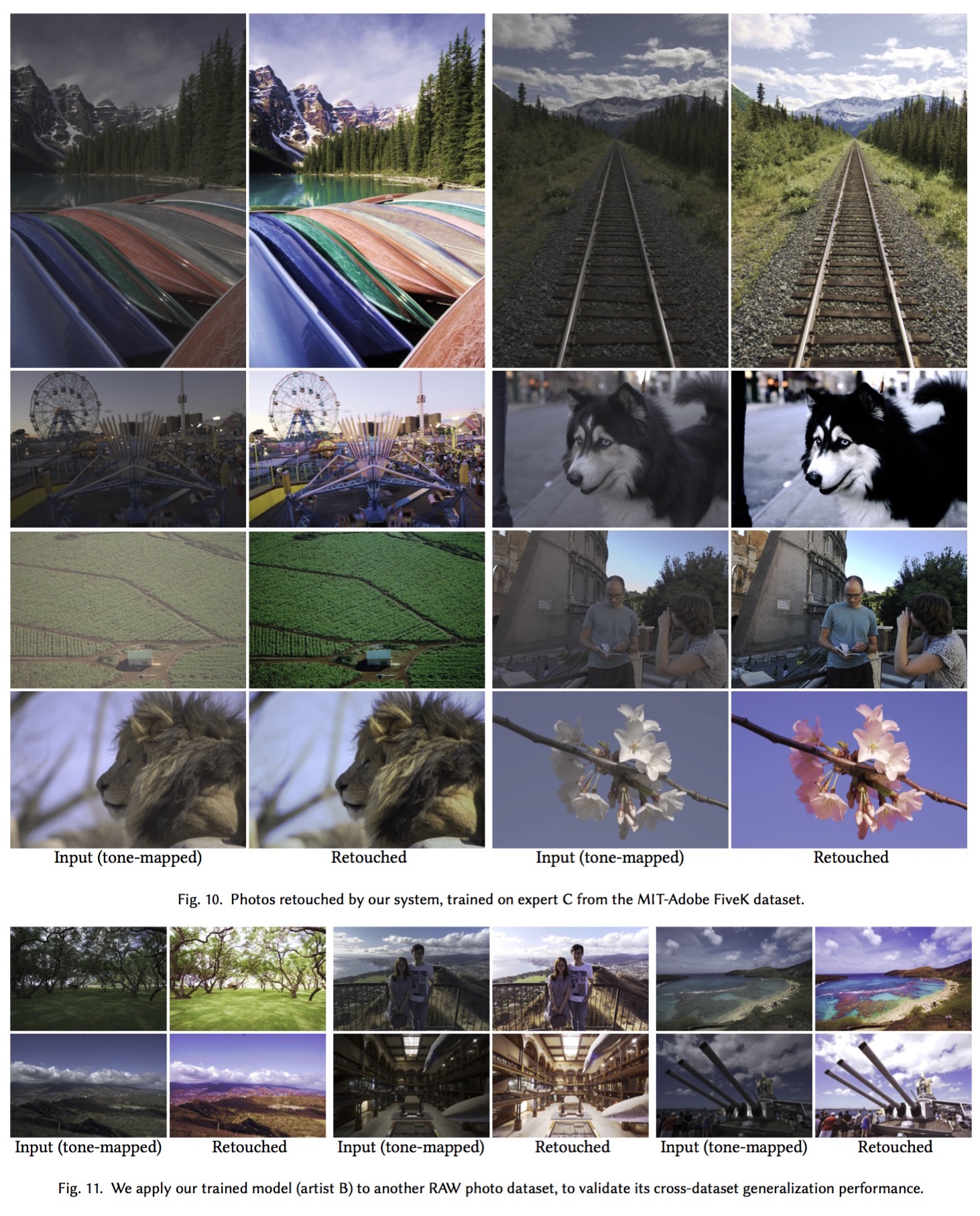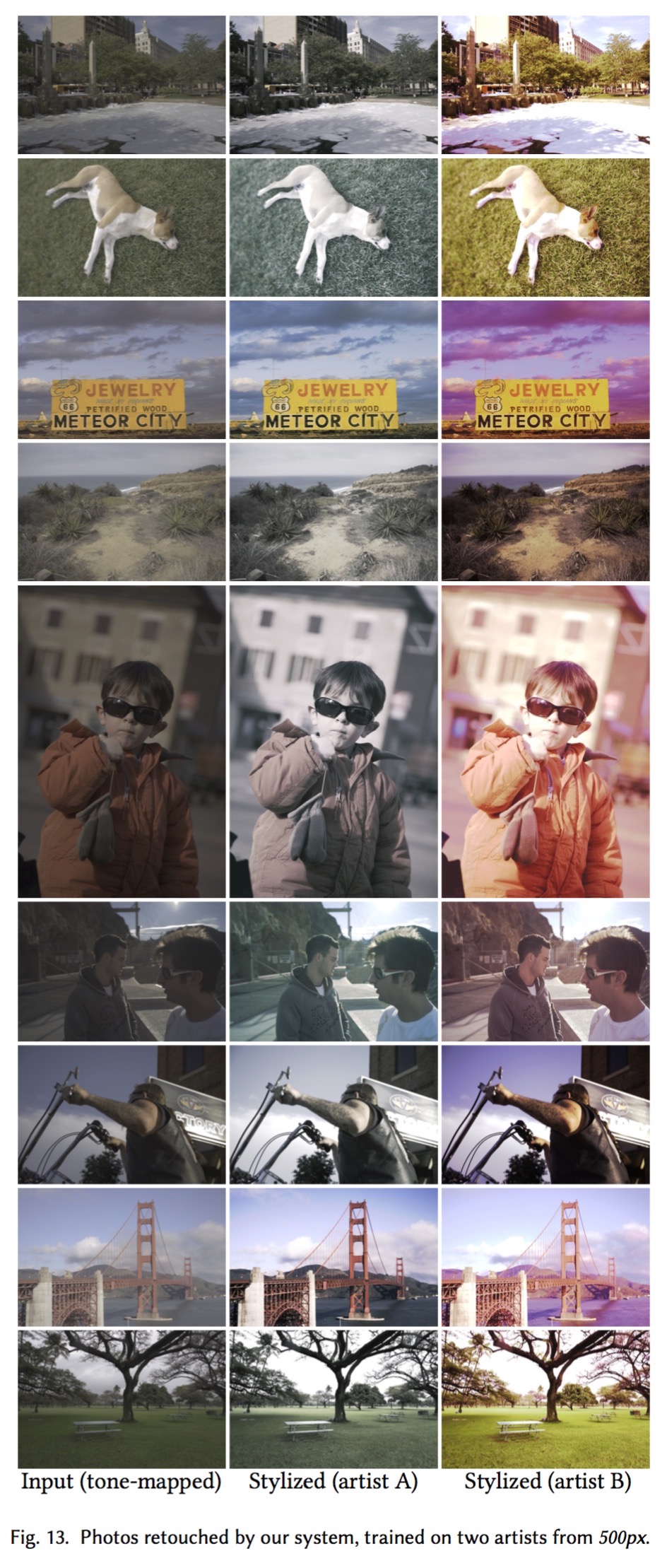Exposure: A White-Box Photo Post-Processing Framework [Paper]
Change log (page under construction):
- March 9, 2018: Finished code clean-up. Uploaded code and some instructions.
- March 1, 2018: Added some images.
Yuanming Hu, Microsoft Research & MIT CSAIL
Hao He, Microsoft Research & MIT CSAIL
Chenxi Xu, Microsoft Research & Peking University
Baoyuan Wang, Microsoft Research
Stephen Lin, Microsoft Research
Requirements: python3 and tensorflow. Tested on Ubuntu 16.04 and Arch Linux. OS X may work but Windows probably not. More cross-platform supports comming soon.
sudo pip3 install tensorflow-gpu opencv-python tifffile scikit-image
git clone https://github.com/yuanming-hu/exposure --recursive
cd exposure
python3 evaluate.py example pretrained models/sample_inputs/*.tif- Results will be generated at
outputs/
- Download and set up the
MIT-Adobe FiveK Dataset- This can be a bit troublesome. More detailed instructions or automatic script coming soon.
python3 train.py example(This will load config_example.py)- Have a cup of tea (~100 min on a GTX 1080 Ti)
- Done!
- Does it work on
jpgorpngimages?
To some extent, yes. Exposure is originally designed for RAW photos, which assumes 12+ bit color depth and linear "RGB" color space (or whatever we get after demosaicing). jpg and png images typically have only 8-bit color depth (except 16-bit pngs) and the lack of information (dynamic range/activation resolution) may lead to suboptimal results. Moreover, jpg and most pngs assume an sRGB color space, which contains a roughly 1/2.2 Gamma correction, making the data nonlinear.
Therefore, when applying Exposure to these images, such nonlinearity may slightly affect the result, as the pretrained model is trained on linearized color space from ProPhotoRGB.
If you train Exposure in your own collection of images that are jpg, it is OK to apply Exposure to similar jpg images.
Note that Exposure is just a prototype (proof-of-concept) of our latest research, and there are definitely a lot of engineering efforts required to make it suitable for a real product. Like many deep learning systems, usually when the inputs are too different from training data, suboptimal results will be generated. Defects like this may be alleviated by more human engineering efforts which are not included in this research project whose goal is simply prototyping.
- Why am I getting different results everytime I run Exposure on the same image?
If you read the paper, you will find that the system is learning a one-to-many mapping, instead of one-to-one. The one-to-many mapping mechanism is achieved using randomness (noise vector in some other GAN papers), and therefore you may get slightly different results every time.
@article{hu2017exposure,
title={Exposure: A White-Box Photo Post-Processing Framework},
author={Hu, Yuanming and He, Hao and Xu, Chenxi and Wang, Baoyuan and Lin, Stephen},
journal={arXiv preprint arXiv:1709.09602},
year={2017}
}
- This project is NOT built to take place of human artists, instead, we aim to provide better tools for artists, and many other people who are interested in digital photography.
- I recently upgraded components of
Exposuree.g. (Python2 to 3,tensorflow1.0 to 1.6,OpenCV2 to 3 etc.) to make future maintenance easier. However, I have done only a basic pass of testing, even though some upgrades contains breaking changes. This means this open-source version may have issues related to these upgrades. Please let me know if you find any problems!

